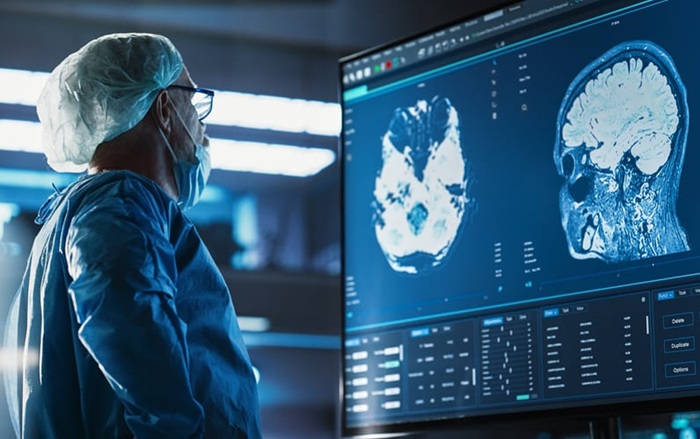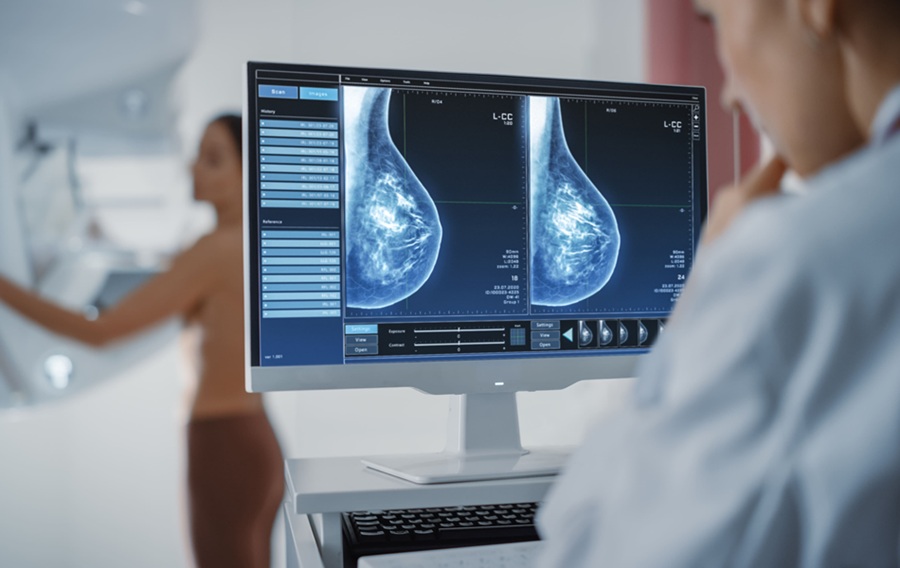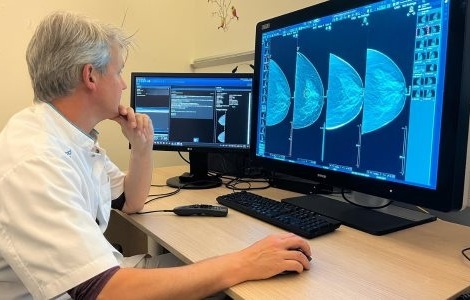Imaging Workstation Links Imaging Devices, Clinical Applications
|
By MedImaging International staff writers Posted on 24 May 2012 |
A new imaging workstation is a workflow environment that links imaging devices, clinical applications, and information technology (IT), so the user can access imaging software tools across modalities and care areas from anywhere.
Built on the AW and Centricity platforms, GE Healthcare’s (Chalfont St. Giles, UK) Dexus takes imaging workflow to a new degree of efficiency. As integral parts of the Dexus environment, AW Workstation and AW Server provide the portal to a wide range of easy-to-use clinical applications. By streamlining postprocessing and synergizing imaging techniques, it solves productivity needs across computed tomography (CT), magnetic resonance imaging (MRI), positron emission tomography (PET), single photon emission computed tomography (SPECT), and interventional applications. In the meantime, the AW Server converts almost any personal computer (PC), laptop, or picture archiving and communication system (PACS) desktop to a two-dimensional (2D), 3D, and 4D postprocessing workstation. Now, the user can remotely review and share images in real time, enabling close collaboration with internal clinicians, stronger referring physician partnerships, more confident diagnoses, and better patient care.
One desktop can be used for all reading needs, including advanced clinical applications across modalities and care areas; optimized protocols, review steps and tools to guide simple image review and analysis; radiology information system (RIS) and PACS combination offers extensive reporting capabilities; an immediate diagnosis in real-time; auto-preprocessing so that exams are instantly ready to read and PACS integration for instant access to online postprocessing and comparison of current and earlier exams; and multiple sessions to minimize workflow interruptions where the user is and access is available from anywhere.
Other features of the system include: smart compression for diagnosis even over low-bandwidth DSL connections; single sign-on verification and encryption for thin-client access over the Internet; and free image importer to load exams from the client PC for 3D post-processing; centralized information storage helps avoid work duplication; save state to readily share 3D imaging work--complete with measurements and annotations--with colleagues; and lastly, built-in security to help implement and uphold privacy policies.
Related Links:
GE Healthcare
Built on the AW and Centricity platforms, GE Healthcare’s (Chalfont St. Giles, UK) Dexus takes imaging workflow to a new degree of efficiency. As integral parts of the Dexus environment, AW Workstation and AW Server provide the portal to a wide range of easy-to-use clinical applications. By streamlining postprocessing and synergizing imaging techniques, it solves productivity needs across computed tomography (CT), magnetic resonance imaging (MRI), positron emission tomography (PET), single photon emission computed tomography (SPECT), and interventional applications. In the meantime, the AW Server converts almost any personal computer (PC), laptop, or picture archiving and communication system (PACS) desktop to a two-dimensional (2D), 3D, and 4D postprocessing workstation. Now, the user can remotely review and share images in real time, enabling close collaboration with internal clinicians, stronger referring physician partnerships, more confident diagnoses, and better patient care.
One desktop can be used for all reading needs, including advanced clinical applications across modalities and care areas; optimized protocols, review steps and tools to guide simple image review and analysis; radiology information system (RIS) and PACS combination offers extensive reporting capabilities; an immediate diagnosis in real-time; auto-preprocessing so that exams are instantly ready to read and PACS integration for instant access to online postprocessing and comparison of current and earlier exams; and multiple sessions to minimize workflow interruptions where the user is and access is available from anywhere.
Other features of the system include: smart compression for diagnosis even over low-bandwidth DSL connections; single sign-on verification and encryption for thin-client access over the Internet; and free image importer to load exams from the client PC for 3D post-processing; centralized information storage helps avoid work duplication; save state to readily share 3D imaging work--complete with measurements and annotations--with colleagues; and lastly, built-in security to help implement and uphold privacy policies.
Related Links:
GE Healthcare
Latest Imaging IT News
- New Google Cloud Medical Imaging Suite Makes Imaging Healthcare Data More Accessible
- Global AI in Medical Diagnostics Market to Be Driven by Demand for Image Recognition in Radiology
- AI-Based Mammography Triage Software Helps Dramatically Improve Interpretation Process
- Artificial Intelligence (AI) Program Accurately Predicts Lung Cancer Risk from CT Images
- Image Management Platform Streamlines Treatment Plans
- AI-Based Technology for Ultrasound Image Analysis Receives FDA Approval
- AI Technology for Detecting Breast Cancer Receives CE Mark Approval
- Digital Pathology Software Improves Workflow Efficiency
- Patient-Centric Portal Facilitates Direct Imaging Access
- New Workstation Supports Customer-Driven Imaging Workflow
Channels
Radiography
view channel
X-Ray Breakthrough Captures Three Image-Contrast Types in Single Shot
Detecting early-stage cancer or subtle changes deep inside tissues has long challenged conventional X-ray systems, which rely only on how structures absorb radiation. This limitation keeps many microstructural... Read more
AI Generates Future Knee X-Rays to Predict Osteoarthritis Progression Risk
Osteoarthritis, a degenerative joint disease affecting over 500 million people worldwide, is the leading cause of disability among older adults. Current diagnostic tools allow doctors to assess damage... Read moreMRI
view channel
Novel Imaging Approach to Improve Treatment for Spinal Cord Injuries
Vascular dysfunction in the spinal cord contributes to multiple neurological conditions, including traumatic injuries and degenerative cervical myelopathy, where reduced blood flow can lead to progressive... Read more
AI-Assisted Model Enhances MRI Heart Scans
A cardiac MRI can reveal critical information about the heart’s function and any abnormalities, but traditional scans take 30 to 90 minutes and often suffer from poor image quality due to patient movement.... Read more
AI Model Outperforms Doctors at Identifying Patients Most At-Risk of Cardiac Arrest
Hypertrophic cardiomyopathy is one of the most common inherited heart conditions and a leading cause of sudden cardiac death in young individuals and athletes. While many patients live normal lives, some... Read moreUltrasound
view channel
Wearable Ultrasound Imaging System to Enable Real-Time Disease Monitoring
Chronic conditions such as hypertension and heart failure require close monitoring, yet today’s ultrasound imaging is largely confined to hospitals and short, episodic scans. This reactive model limits... Read more
Ultrasound Technique Visualizes Deep Blood Vessels in 3D Without Contrast Agents
Producing clear 3D images of deep blood vessels has long been difficult without relying on contrast agents, CT scans, or MRI. Standard ultrasound typically provides only 2D cross-sections, limiting clinicians’... Read moreNuclear Medicine
view channel
PET Imaging of Inflammation Predicts Recovery and Guides Therapy After Heart Attack
Acute myocardial infarction can trigger lasting heart damage, yet clinicians still lack reliable tools to identify which patients will regain function and which may develop heart failure.... Read more
Radiotheranostic Approach Detects, Kills and Reprograms Aggressive Cancers
Aggressive cancers such as osteosarcoma and glioblastoma often resist standard therapies, thrive in hostile tumor environments, and recur despite surgery, radiation, or chemotherapy. These tumors also... Read more
New Imaging Solution Improves Survival for Patients with Recurring Prostate Cancer
Detecting recurrent prostate cancer remains one of the most difficult challenges in oncology, as standard imaging methods such as bone scans and CT scans often fail to accurately locate small or early-stage tumors.... Read moreGeneral/Advanced Imaging
view channel
3D Scanning Approach Enables Ultra-Precise Brain Surgery
Precise navigation is critical in neurosurgery, yet even small alignment errors can affect outcomes when operating deep within the brain. A new 3D surface-scanning approach now provides a radiation-free... Read more
AI Tool Improves Medical Imaging Process by 90%
Accurately labeling different regions within medical scans, a process known as medical image segmentation, is critical for diagnosis, surgery planning, and research. Traditionally, this has been a manual... Read more
New Ultrasmall, Light-Sensitive Nanoparticles Could Serve as Contrast Agents
Medical imaging technologies face ongoing challenges in capturing accurate, detailed views of internal processes, especially in conditions like cancer, where tracking disease development and treatment... Read more
AI Algorithm Accurately Predicts Pancreatic Cancer Metastasis Using Routine CT Images
In pancreatic cancer, detecting whether the disease has spread to other organs is critical for determining whether surgery is appropriate. If metastasis is present, surgery is not recommended, yet current... Read moreIndustry News
view channel
GE HealthCare and NVIDIA Collaboration to Reimagine Diagnostic Imaging
GE HealthCare (Chicago, IL, USA) has entered into a collaboration with NVIDIA (Santa Clara, CA, USA), expanding the existing relationship between the two companies to focus on pioneering innovation in... Read more
Patient-Specific 3D-Printed Phantoms Transform CT Imaging
New research has highlighted how anatomically precise, patient-specific 3D-printed phantoms are proving to be scalable, cost-effective, and efficient tools in the development of new CT scan algorithms... Read more
Siemens and Sectra Collaborate on Enhancing Radiology Workflows
Siemens Healthineers (Forchheim, Germany) and Sectra (Linköping, Sweden) have entered into a collaboration aimed at enhancing radiologists' diagnostic capabilities and, in turn, improving patient care... Read more

















